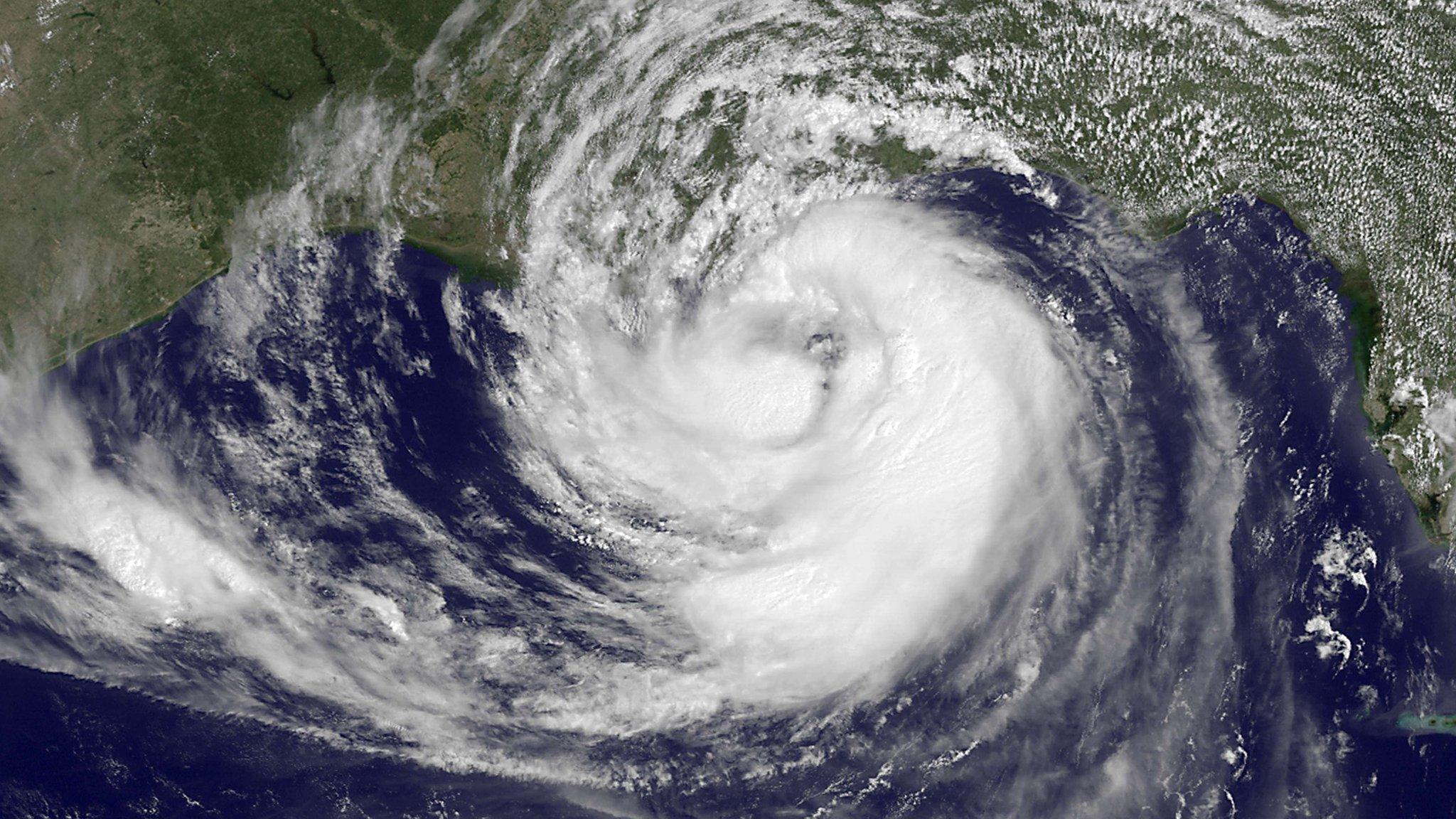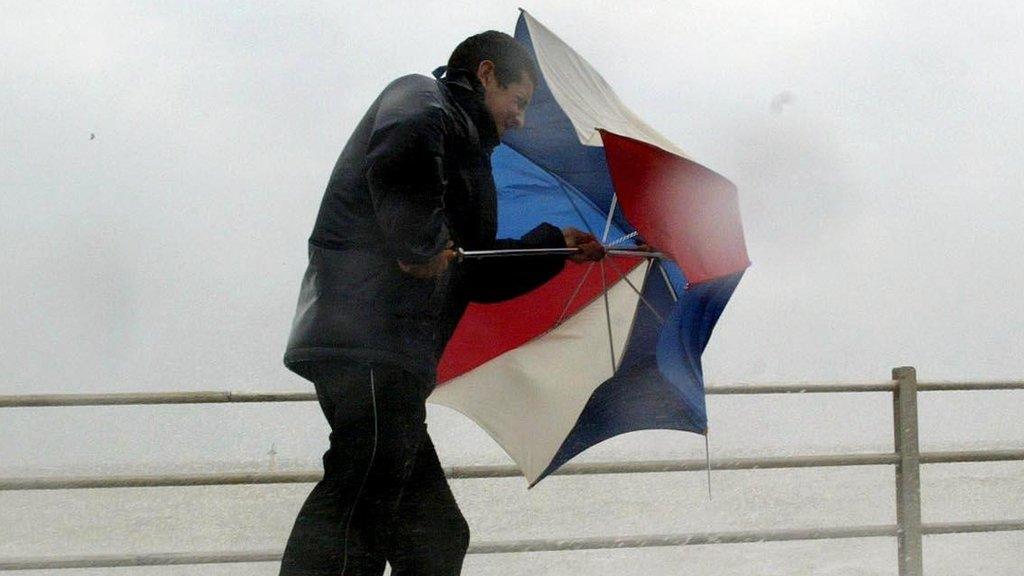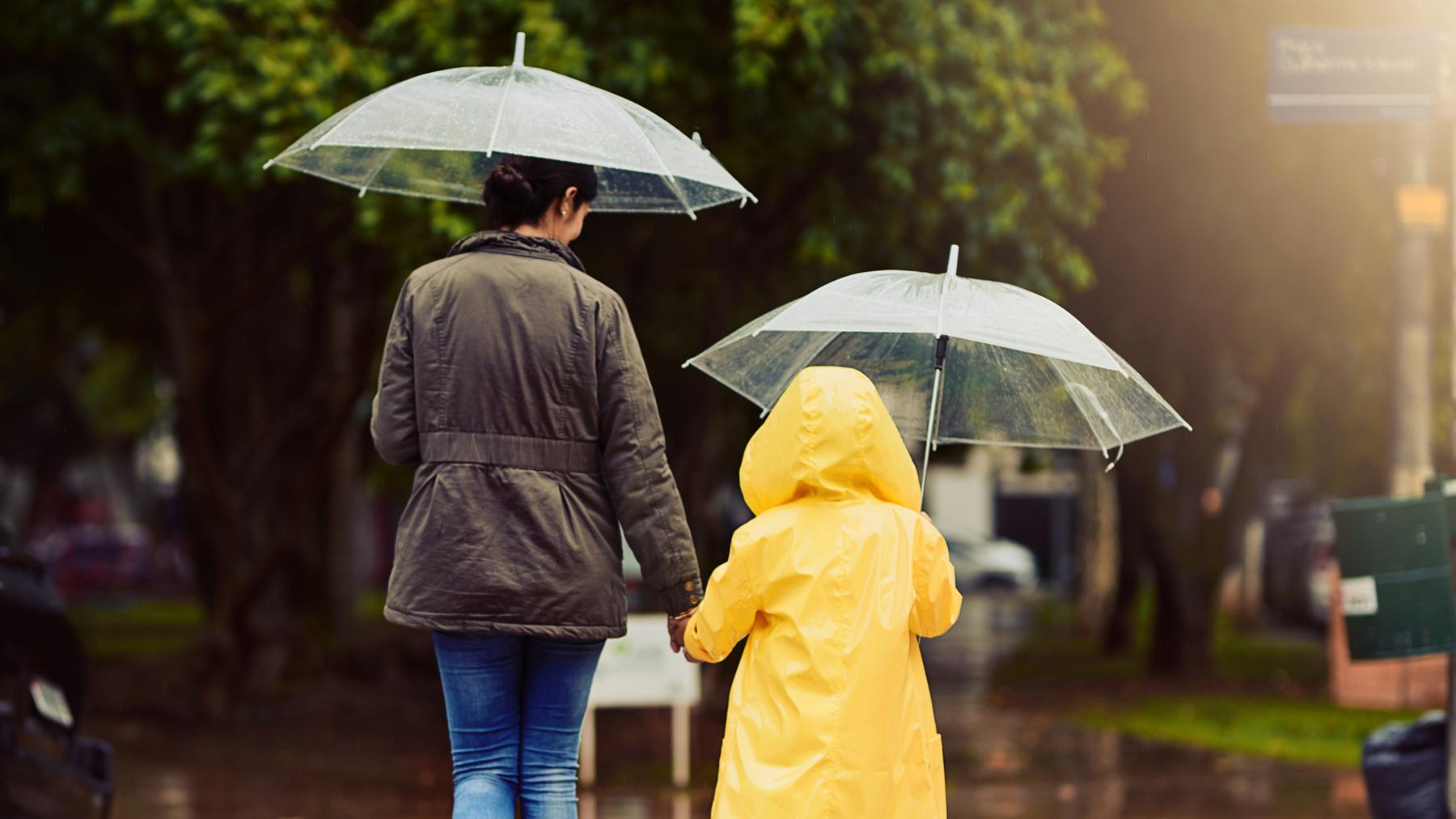Storm names: Met Office announces what the next storms are going to be called
- Published
- comments

Severe storms in the UK have been given names since 2015
The Met Office, which is the UK's national weather service, has revealed the storm names for 2022/23.
The Met Office has been giving storms a name every year since 2015, with the list of new storm names typically running from early September until late August the following year.
So, how exactly are these names picked? In the UK, members of the public get to play a role in the whole process. They're able to contact the Met Office with ideas for potential names.
This year Daisy, Glen, Khalid and Owain all made the list after being suggested through e-mail submissions.
The name Betty won a public vote on Twitter, with more than 12,000 votes cast.

Storm Eunice hit parts of the UK earlier this year
A full list of the names for the year is put together by the UK's Met Office, along with the Irish weather forecaster Met Eireann, and the Dutch national weather forecasting service, KNMI.
For 2022/23, KNMI selected the names Antoni, Hendrika, Johanna and Loes, in honour of famous Dutch scientists, while Met Eireann chose Cillian, Fleur, Ide, and Nelly.
Storms are named in alphabetical order, meaning that Antoni will be the first storm of the new season.
The storm names for September 2022 to August 2023 are:
Antoni
Betty
Cillian
Daisy
Elliot
Fleur
Glen
Hendrika
Ide
Johanna
Khalid
Loes
Mark
Nelly
Owain
Priya
Ruadhan
Sam
Tobias
Val
Wouter
When are storms given a name?
Storms are named when they have the potential to cause either an amber or red warning.
A red warning is the most serious kind of weather warning the Met Office can issue, where the effects of the weather are likely to be very serious.
An amber warning is one step down from this. When an amber warning is issued, the weather is not quite as severe compared to a red warning, but it can still have a big impact on people's lives.
UK Weather: How do storms get their names?
The Met Office's head of situational awareness Will Lang said naming storms helped raise the public's awareness about them.
"We know from seven years of doing this that naming storms works," he said.
"Last year, Storms Arwen and Eunice brought some severe impacts to the UK and we know that naming storms helps to raise awareness and give the public the information they need to stay safe in times of severe weather."
The Met Office said 98% of people within the red warning area in the southeast for Storm Eunice were aware of the warning, and 91% of those took action to protect themselves, their property or business.
- Published31 August 2023

- Published14 December 2017

- Published6 August 2019

